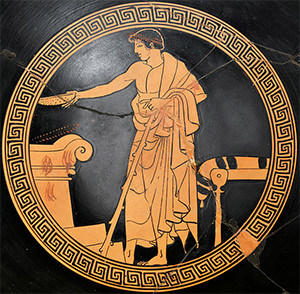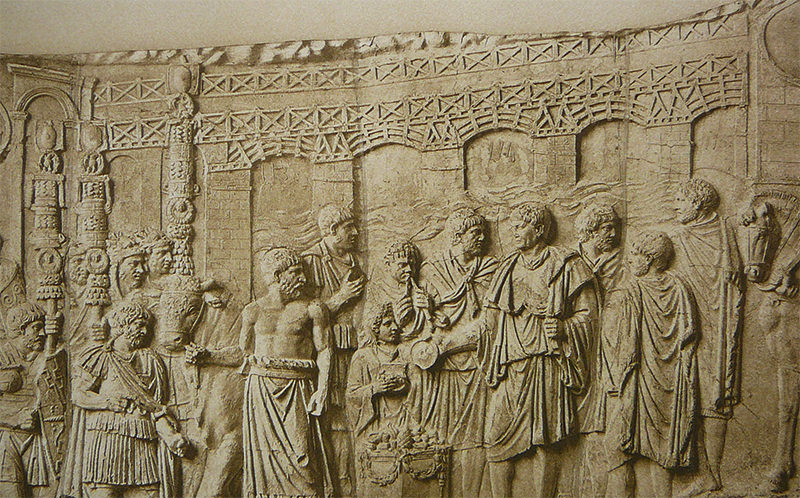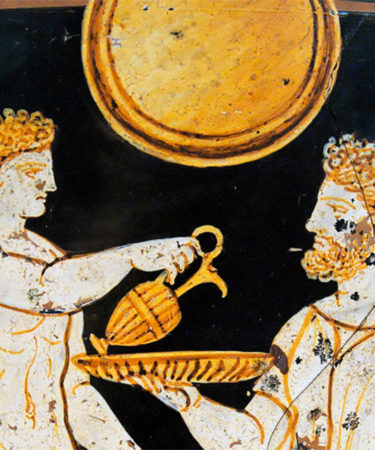You may know it from Tupac, Key & Peele, or Dr. Evil, but “pouring one out” is a lot older than you might think. It’s actually straight-up ancient.
Just a quick refresher for the uninitiated: pouring one out refers to “the act of pouring liquid (usually an alcoholic beverage) on the ground as a sign of reverence for friends or relatives that have passed away. In most cases, a 40 ounce bottle (see: forty) of liquor is used.” That’s Urban Dictionary’s definition. Funny thing is, it isn’t much different from the way they did it in ancient times. Except, of course, no liquor.
One of the oldest instances of pouring one out—technically known as making a libation—comes from Ancient Egypt, where the liquid offering for the dead was typically water (the rhythms of the Nile River being a source of life and death, that seems pretty apt). There’s even biblical, as in Old-Testament-biblical, reference to the practice. Per Genesis 35:14, “Jacob set up a pillar in the place where he had spoken with him [God], even a pillar of stone. He poured out a drink offering on it and poured oil on it.” Not quite an offering for the dead so much as, well, Yahweh, but still, we have the concept of pouring liquid out as an act of reverence.

And, of course, libation was an integral ceremony in Ancient Greece (they were generally pretty big fans of ritual). According to The Encyclopedia of Ancient History, libations “were part of all sacrifices, but could also be performed as independent rituals.” The Greeks had two kinds of libation, spondai and choai. Whereas choai were “poured out entirely and were used for libations to the gods of the underworld, the heroes and the dead,” spondai meant a “controlled outpouring of a small amount of liquid for the Olympian gods,” that liquid usually being wine. This gets us a bit closer to the modern practice, since now we have an alcoholic beverage (though the Greeks also used milk and honey in their libations) that was meant to be both poured and consumed. In fact, in most cases where wine was to be consumed, a bit would be poured out in veneration. (And now we begin to feel bad for hissing at people when they ask for a sip of our drinks…)
In fact, in case you’re doubting Ancient Greek willingness to sacrifice alcohol, the libation ritual comes up again and again in Homer’s Iliad and Odyssey. In Book VI of The Iliad, Hector’s mother tells him “Wait till I fetch you some sweet honeyed wine, first to pour a libation to Zeus and the other gods, and then for your relief if you will drink.” Once more, the idea seems to be “a bit for the gods, or fallen, and the rest for us.”
Ancient Rome, unabashed copycat of Ancient Greece, also incorporated the practice of libation, both as an offering to the gods and as a means to honor the dead. In fact, Roman tombs were sometimes designed as sarcophagi lidded massive stone sculptures of what looked like reclining, dining figures. In one particular tomb design, the mourner could actually pour a wine libation into the stone cup in the statue’s hand, and a hole in the bottom of the cup would ensure that wine made it to the actual human remains. Hard core, yes.

If the Ancient Romans preferred literal contact, when they could get it, these days, the mystery and honor of libation is more often symbolic, but still as integral. Kwanzaa, which begins on the 26th of this month, incorporates a ritual of libation wherein water is poured out to honor the familiar dead, as well as honor larger communities of African and American ancestry.
For all its modern connotations, the practice of ritually pouring out liquid has survived millennia, weaving its way into various religious and cultural settings, at this point able to exist in a fairly secular context. Why the specific practice has had such historic and universal appeal is anyone’s guess. Maybe it’s just that sharing a drink—wine, water, or malt liquor—with the departed that makes them feel that much closer.
Header image © Marie-Lan Nguyen / Wikimedia Commons
